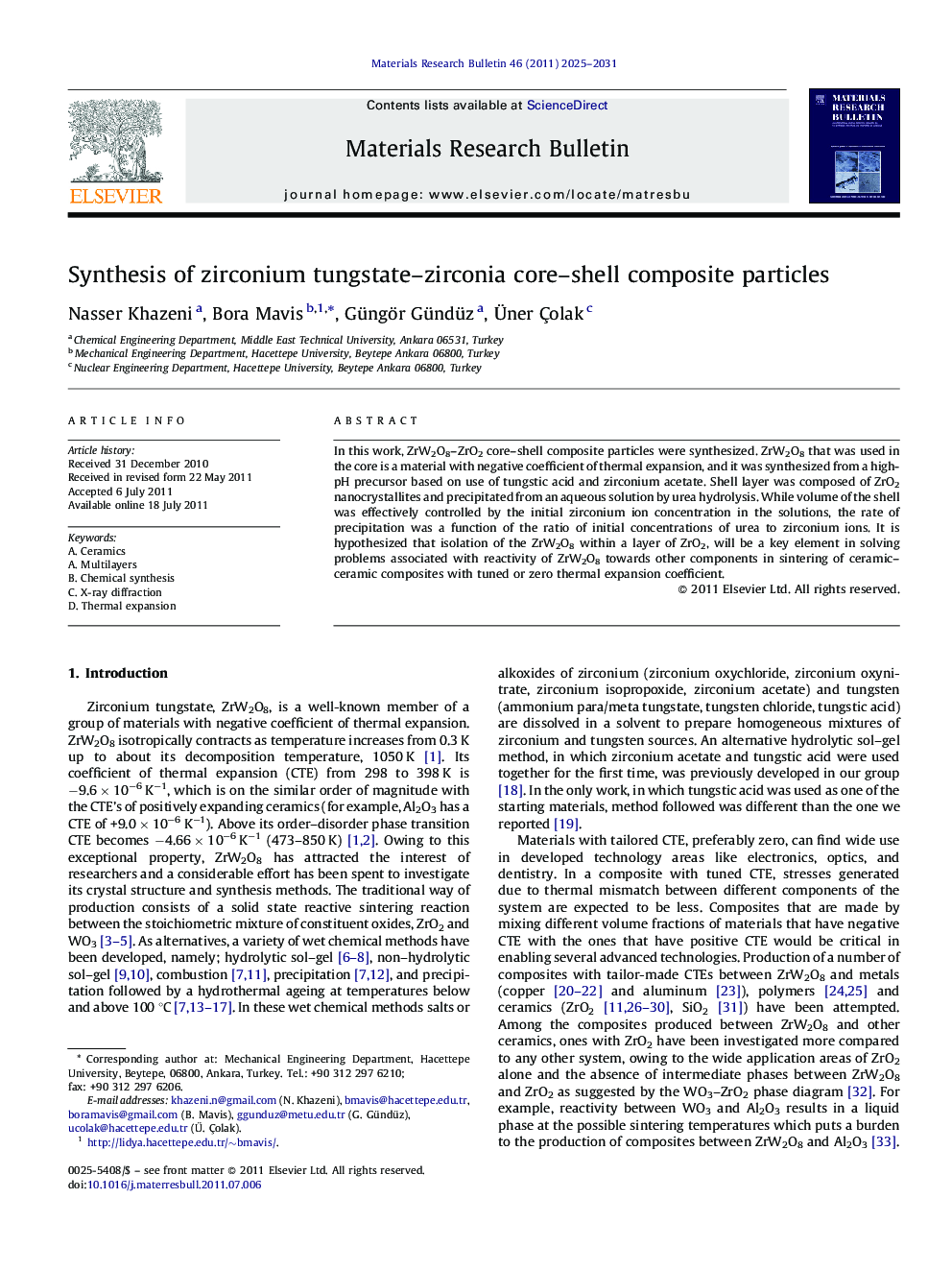| Article ID | Journal | Published Year | Pages | File Type |
|---|---|---|---|---|
| 1489595 | Materials Research Bulletin | 2011 | 7 Pages |
In this work, ZrW2O8–ZrO2 core–shell composite particles were synthesized. ZrW2O8 that was used in the core is a material with negative coefficient of thermal expansion, and it was synthesized from a high-pH precursor based on use of tungstic acid and zirconium acetate. Shell layer was composed of ZrO2 nanocrystallites and precipitated from an aqueous solution by urea hydrolysis. While volume of the shell was effectively controlled by the initial zirconium ion concentration in the solutions, the rate of precipitation was a function of the ratio of initial concentrations of urea to zirconium ions. It is hypothesized that isolation of the ZrW2O8 within a layer of ZrO2, will be a key element in solving problems associated with reactivity of ZrW2O8 towards other components in sintering of ceramic–ceramic composites with tuned or zero thermal expansion coefficient.
Graphical abstractFigure optionsDownload full-size imageDownload as PowerPoint slideHighlights► ZrW2O8–ZrO2 core–shell particles to offer solutions for sintering problems. ► Core synthesis by a precursor based on tungstic acid and zirconium acetate. ► Shell phase by urea hydrolysis in the presence of zirconium ions. ► [Urea]/[ZrOCl2] ratio controls the rate of shell precursor precipitation.
